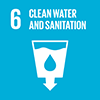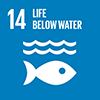June 2022 - You are accessing an old version of our website. The SDGs Voluntary Commitments have been migrated here: https://sdgs.un.org/partnerships
You will be redirected to the new Partnership Platform in 10 seconds.
June 2022 - You are accessing an old version of our website. The SDGs Voluntary Commitments have been migrated here: https://sdgs.un.org/partnerships
You will be redirected to the new Partnership Platform in 10 seconds.
As circular economy is a complex and far-reaching concept, in December 2015 the European Commission has established a unique comprehensive strategy, the Circular Economy Action Plan. The plan aimed to boost jobs, growth and investment while protecting environment and natural capital. It includes 54 actions covering the whole cycle of materials and products – from production and consumption to waste management and the market for secondary raw materials. As of January 2019, more than 90% of actions have been delivered. The Commission will reach full implementation within the current College’s mandate, in 2019.
The ambition of the European Commission is to accelerate Europe’s transition towards a circular economy, making the EU a force able to lead the international system beyond the current outdated take-make-dispose model.
The Action Plan builds joint ownership starting by the idea that an efficient circular economy can only be achieved when public authorities, the business community, and civil society work together. This coalition of broad support was instrumental to engage a number of stakeholders since the initial steps of the action plan.
The Commission is also working to break policy silos and expand circular economy principles across policy areas, for example by looking at priority areas (i.e. plastics, bio-mass, construction and demolition waste, etc). This approach is also applied internally by fostering cross-departmental cooperation to attain higher level of staff engagement and coordination.
Another unique feature is the smart combination of legislative, financial and support initiatives, putting also a strong emphasis on ground-level progress and stakeholder engagement, while creating the right framework for more and better investments.
The action plan is an effective response to the 2030 Agenda, since it empowers public authorities and stakeholders to accelerate the circular economy transition. The circular model can secure jobs in Europe, promote innovations, create competitive advantage for EU businesses, and protect the environment in Europe and beyond.
European Commission’s circular economy strategy benefits and supports the achievement of several Sustainable Development Goals, including SDG 6 on energy, SDG 8 on economic growth, SDG 11 on sustainable cities, SDG 12 on sustainable consumption and production, SDG 13 on climate change, SDG 14 on oceans, and SDG 15 on life on land.
The Action Plan supports circular change by involving economic actors, local authorities and civil society. In cooperation with the European Economic and Social Committee, the Commission launched the European Circular Economy Stakeholder Platform and its website – an open space where stakeholders can disseminate expertise, good practices, commitments, strategies. The Commission cooperates with EU co-legislators (European Parliament; Council of the EU) to implement the legislative actions included in the Action Plan. With regard to EU Member States administrations, the European Commission is leading initiatives to foster understanding and best practice sharing at policy level. Stakeholders are consulted throughout the policy-making process.
The European Commission has already delivered more than 90% of the actions. Among others, the following actions are contributing to the European transition towards a circular economy:
o Revised legislation on waste, which is set to reinforce EU’s current role of global leader in recycling.
o The first-ever European Strategy for Plastics, and a follow-up legislation to reduce the negative effects on the environment of some single use plastic items.
o The proposal of a revised Fertilisers Regulation, which is currently undergoing the final steps in the legislative process.
o Guidance documents in the areas of industrial emissions, water management, recycling of construction & demolition waste, unfair commercial practices and Green Public Procurement
o The Ecodesign Working Plan 2016-2019.
The Commission has also adopted a Circular Economy Monitoring Framework to measure progress towards a circular economy at EU and national level. It allows policy makers to identify good practices and prioritise areas where further action is needed to meet the long term goal of a circular economy. The monitoring framework is not just relevant to policy makers but may be used by all – whether they are consumers or businesses – to inspire and drive action. It is composed of a set of ten key indicators which cover each phase – i.e. production, consumption, waste management and secondary raw materials – as well as economic aspects i.e. investments, jobs, gross value added and innovation.
The Action Plan has undoubtedly contributed to further decoupling economic growth from resource use, as well as to increase take up of circular practices amongst stakeholders. Among others, the Action Plan has contributed to increase resource productivity, to increase circular material use rate, to increase the take up of circular economy practices among SMEs, and to mainstream the concept of circular economy at citizens’ level.
The EU Monitoring Framework for the Circular Economy shows that the transition has contributed to putting the EU back on a path of job creation. In 2016, sectors relevant to the circular economy employed more than 4 million workers and this trend is bound to continue in the coming years in order to meet the expected demand generated by fully functioning markets for secondary raw materials .
Circularity has also opened up new business opportunities, enabled new business models and developed new markets, domestically and outside the EU. In 2016, circular activities such as repair, reuse or recycling generated almost €147 billion while standing for around €17.5 billion worth of investments .
The Action Plan allowed the establishment of a more coherent policy framework for sustainable production and consumption. It has undoubtedly contributed to mainstreaming the concept of circularity in Europe and in the global stage, as a first step to a long-term commitment to establish a European circular economy.
The forward-looking and integrated approach embedded in the Circular Economy Action Plan is now a policy standard, as EU Member States – as well as international partner – are taking up similar strategies. In 2015, only one Member State (the Netherlands) had a circular economy strategy or roadmap at national level. Three years later, the majority of EU Member States have a national strategy or roadmap in place or a plan to adopt it soon.
In particular, today the perception of the business community in Europe has changed, and executives are more aware about the need to factor in risks of business as usual, from a business and environmental perspective.
1) The European Commission manages several important EU funding programmes that are making a difference to support the transition to a circular economy.
Currently, Horizon2020 work program 2018-2020 has a focus area on 'Connecting economic and environmental gains – the Circular Economy', allocating around 1 billion Euro. Through R&I actions a strong contribution will be made to sustainable development goals, climate action, resource efficiency, jobs and growth and industrial competitiveness. In particular, actions on plastics, on premature obsolesce, bioeconomy, organic fertilisers, food waste, to mention a few, will be covered by this focus area. Overall and from 2015 the European Commission has mobilized around 2 billions for R&I in relation to Circular Economy.
Commission’s innovative approach to support circular economy is not limited to classic funding or stakeholder engagement: we also need to increase the transformative potential of circular economy investments and funding. One of the major challenges is to make economically viable projects investment-ready: this requires capacity to prepare and develop investment projects. In other words, innovative business models, as in the Circular Economy, might well require new, innovative financing instruments. The Circular Economy Finance Support Platform aims to upscale investment, both public and private, in the circular economy, by providing such type of expertise to stakeholders ready to engage with circular economy public funding.
2) One of the main constrains when developing and implementing a circular economy strategy as policy-makers, could be a certain “silos mentality” that might prevent horizontal cooperation among different services within the same institution. As circular economy is a complex concept, it requires relevant inputs from different services, such as on environment, industry, research, legal services, etc.
The implementation of the action plan has been a shared effort among Commission’s services. In particular, the Circular Economy Action Plan is a joint file shared by the Directorate General for Environment and the Directorate General for Internal Market, Industry, Entrepreneurship and SMEs. Internal communication, cooperation and coordination among different Commission’s services is fostered throughout circular economy policymaking. Other Directorates, such as the ones for health and food safety or for research and innovation, are contributing on actions relevant to their respective areas of expertise.
Such cooperation is also reflected at the highest political level, with regular inter-service meetings and cabinets of Commissioners meetings, to update on state of play of implementation and address issues that are blocking smooth implementation.
The Circular Economy Action Plan has succeeded in turning circular economy from a niche concept into a mainstream policy, at the top of the international political agenda. The Action Plan achieved a very high consensus among stakeholders on its benefits, and on the disruptive positive change needed to achieve a circular economy.
The transition to a more circular economy, where the value of products, materials and resources is maintained in the economy for as long as possible, and the generation of waste minimised, is an essential contribution to the EU's efforts to develop a sustainable, low carbon, resource efficient and competitive economy.
The circular economy can protect businesses against scarcity of resources and volatile prices, helping to create new business opportunities and innovative, more efficient ways of producing and consuming. It will create local jobs at all skills levels and opportunities for social integration and cohesion.
At the same time, the circular economy will save energy and help avoid the irreversible damages caused by using up resources at a rate that exceeds the Earth's capacity to renew them in terms of climate and biodiversity, air, soil and water pollution. Among other benefits, recent studies estimates that a circular economy can cut emissions from heavy industry: in an ambitious scenario, as much as 296 million tons CO2 per year in the EU by 2050, out of 530 Mt in total – and some 3.6 billion tonnes per year globally.
The Circular Economy Action Plan is a political instrument with high replicability: its focus on cooperation and comprehensive action, covering the entire product’s cycle, makes it suitable for different political and economic contexts.
After three years of successful implementation, the European Commission could identify three lessons learned, for the benefit of other institutions willing to engage with circular economy:
1) Circular economy is complex. Therefore, a comprehensive strategy to close the loop and targeting strategic sectors is the best tool to address all its aspects.
2) There are short and long-term benefits in making circular economy a priority across departments inside a public institution. Services dealing with environmental protection, industry, research, international cooperation, and potentially many others, can contribute to mainstream the concept within and outside the institution.
3) Circular change is faster when economic actors and civil society are directly involved. An effective public policy on circular economy needs support from business and civil society in order to maximise its benefits for the environment and for the economy.
European Commission
https://ec.europa.eu/commission/priorities/jobs-growth-and-investment/towards-circular-economy_en
Directorate General for the Environment – European Commission
http://ec.europa.eu/environment/circular-economy/index_en.htm
Directorate General for Internal Market, Industry, Entrepreneurship and SMEs
https://ec.europa.eu/growth/industry/sustainability/circular-economy_en
EU monitoring framework for Circular Economy
https://ec.europa.eu/eurostat/web/circular-economy
European Circular Economy Stakeholder Platform
https://circulareconomy.europa.eu/platform/







 Start: 31 December, 2015
Start: 31 December, 2015 Completion: 31 December, 2020
Completion: 31 December, 2020